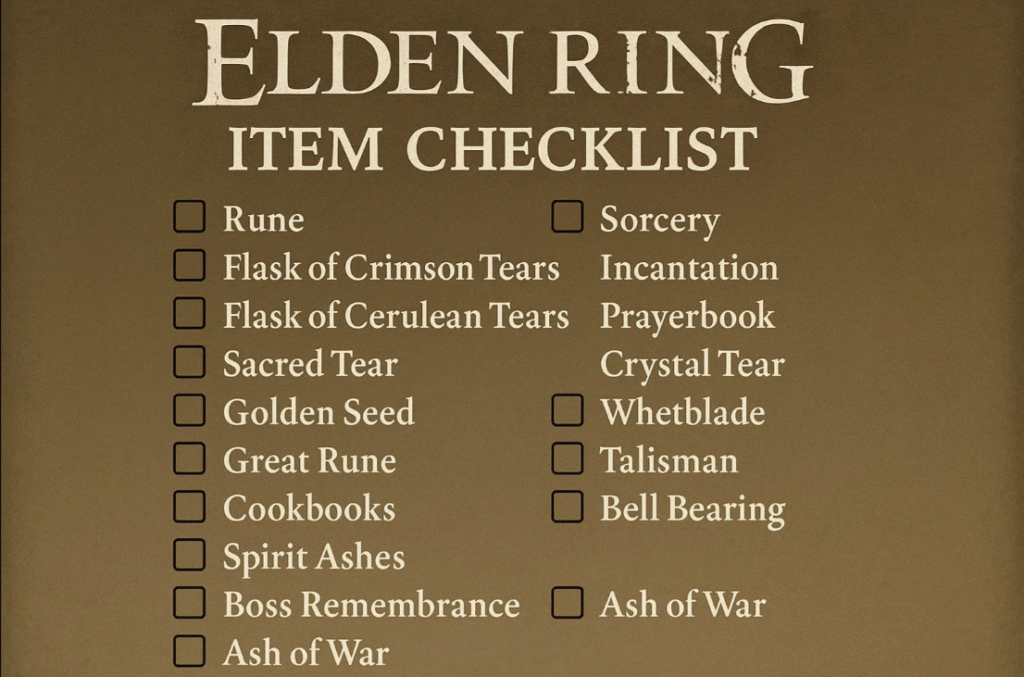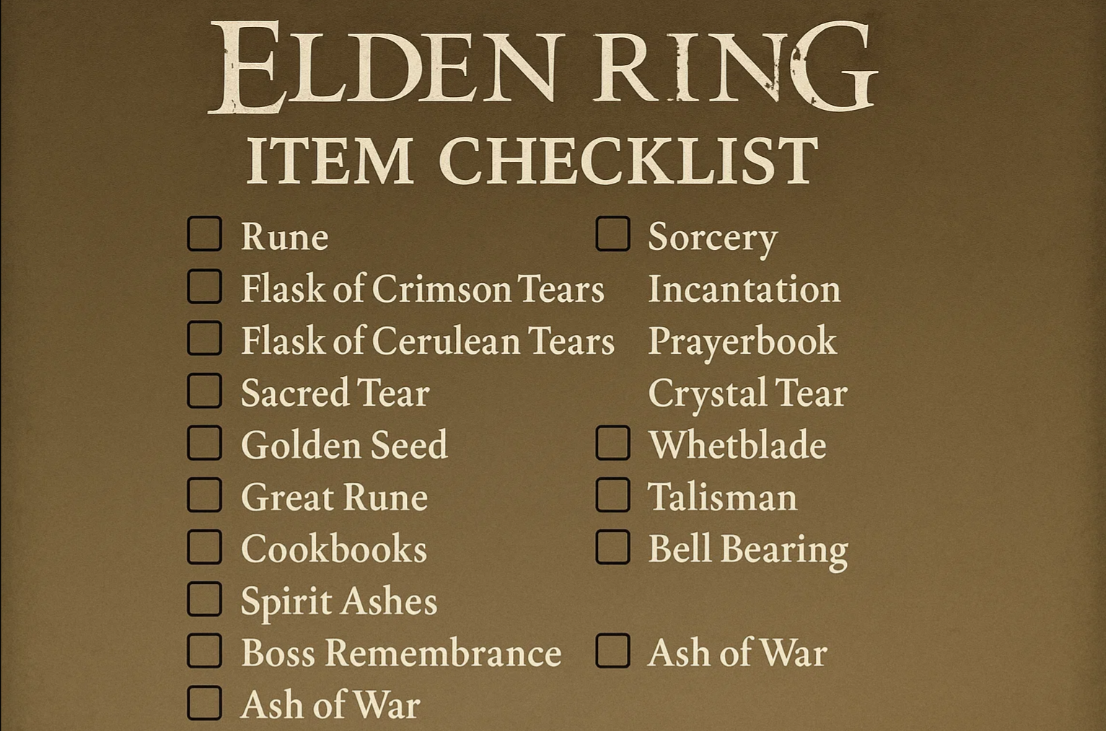Collecting every item in Elden Ring is no small task. With hundreds of weapons, talismans, armor sets, crafting materials, and key items scattered across the vast Lands Between, it’s easy to miss something along the way. For completionists, lore hunters, or anyone looking to get the most out of the game, a detailed item checklist is essential. In this guide, I’ll walk you through how to approach collecting everything, along with some tips to stay organized and efficient.
Why Use an Item Checklist?
There’s something incredibly satisfying about checking off each item as you find it. In Elden Ring, many items are tucked away in hidden dungeons, behind optional bosses, or off the beaten path. A good checklist keeps track of your progress and ensures you don’t overlook any important gear or rare consumables.
It also helps if you’re planning to complete achievements or aim for 100 percent item discovery in New Game Plus. Plus, with new patches and expansions potentially adding more content, keeping your collection up to date is easier when you’re organized.

Categories of Collectible Items
To make things manageable, it helps to divide items into clear categories:
- Weapons and Shields – Every weapon type, from colossal greatswords to daggers and bows, has unique movesets and scaling. Collecting them all gives you flexibility and more build options.
- Armor Sets – While fashion isn’t everything, some armor pieces provide useful stat boosts or resistances.
- Talismans – These can dramatically alter your build and playstyle, and many are hidden in late-game or hard-to-reach areas.
- Ashes of War and Spirit Ashes – Essential for customizing weapons and summoning allies during battle.
- Crafting Materials – Key for players who rely on crafted items like bolts, pots, and greases.
- Key Items and Map Fragments – Crucial for unlocking new areas and progressing the story.
Creating or downloading a comprehensive checklist that includes all these categories will streamline your collection process.
Tips for Efficient Item Collection
Start by exploring each region thoroughly before moving on to the next. Mark locations where you find rare or difficult-to-reach items, and revisit them later if needed. Many players overlook underground areas and hidden catacombs, which often house valuable items.
It also helps to consult community maps or guides that show item locations. Just be mindful of spoilers if you’re experiencing the game for the first time.
For those who don’t have time to grind, some players choose to buy Elden Ring runes to quickly level up or access merchant inventories. This can speed up the collection process, especially when you’re missing runes needed to purchase certain rare gear.
Similarly, if you’re just looking to try different builds without the grind, stocking up on cheap Elden Ring items can help you test gear and weapons without worrying about farming drop rates.
Staying Organized Across Playthroughs
If you’re doing multiple runs or heading into New Game Plus, be sure to keep notes or use spreadsheet trackers to know what you’ve collected. Some items, especially quest-related ones, are only available in specific questlines or choices, so plan accordingly.
Keeping backup save files is another smart move, especially before making key story decisions that lock you out of certain items.
Completing your item collection in Elden Ring is a long but rewarding journey. With the right checklist, a patient approach, and a bit of help from the community, you can uncover every secret the Lands Between has to offer. Whether you’re hunting down legendary weapons or gathering crafting ingredients, having a structured plan makes the experience far more enjoyable—and ensures you don’t miss a thing.
